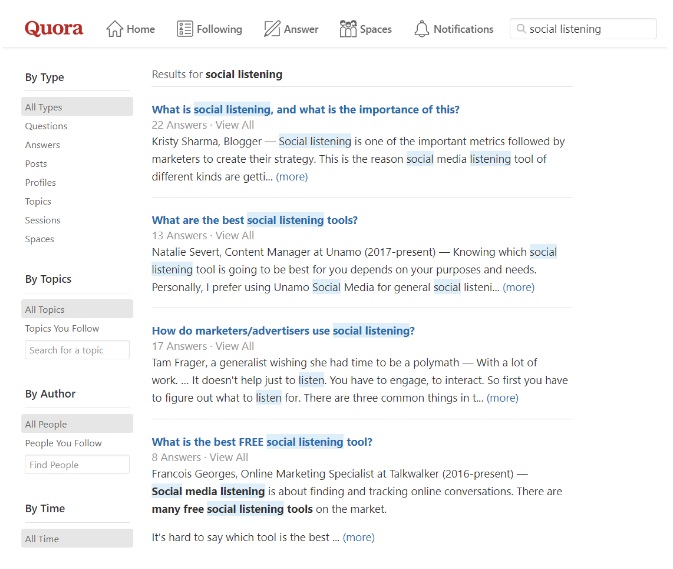
So, you’ve written and published a new blog. Now what?
Before you sit down at your keyboard and type your next idea into existence, you need to give your blog a little push. You don’t want all that hard work to go to waste, do you?
It might be a hard pill to swallow, but even if you have the best content in the world, if you don’t promote it, it will likely fly under your target audience’s radar.
In this article, we’re going to give you 7 fundamental ways you can use social media to drive blog traffic and get people to notice – and read – your blogs.
Let’s begin.
Make share-worthy content easy to share
Is your blog post optimised for social sharing?
Here’s a brief checklist for making your blog posts ultra-shareable:
- White space is your friend.
Break up long blocks of text and keep your paragraphs 2-3 sentences long.
There’s a general consensus that for maximum impact, online content should be written at an 8th grade level.
Not sure if your blogs are easy to read? Here’s a free readability checker where you can check your score: Automatic Readability Checker.
Make your content engaging by using shorter and longer sentences (be careful: your longest sentence shouldn’t be longer than 25 words). Use bullet points, images, animations and infographics to make your post visually appealing.
- Nail the first three paragraphs.
Introduce the most important information in the first three paragraphs of your blog. The first couple of sentences should include the key information (what the blog is about) and then you can start adding additional details.
Nielsen Norman Group published the following graph that shows the percentage of website visitors who read a paragraph relative to its location in the text.

As you can see the percentage of people that keep reading drops significantly after the third paragraph.
Bucket brigades are phrases that act as a bridge between one paragraph and the next. They’re great for SEO and they also make your content skimmable. Examples include:
- But first…
- Think about it.
- By now, you should…
- But that’s not all.
- You see…
- Sadly…
- As it turns out…
We found this guide that gives you 502 phrases that you can use to keep your audience reading.
- Test different titles to see what lands with your audience.
You have a couple of seconds to grab your audience’s attention and a good title is what will make your blog stand out on social media.
Your blog titles should be catchy and should make your audience want to know more. Here’s an informative blog by CoSchedule that goes into great detail about creating titles that work.
- Make your content shareable by adding tweetable snippets and social sharing buttons.
Research shows that adding social sharing buttons leads to 7x more shares/mentions. Give your blog the best chance at being seen and shared by adding social sharing icons and generating ClickToTweet links for significant parts of your blog post.

Now that we’ve covered the basics, let’s see what else you can do to drive more traffic to your blog using social media.
Hashtags, hashtags, hashtags
Hashtags can help you get your content on the radar of people who are interested in and are engaging with similar types of content.
For this tactic to be effective and improve your blog traffic, you need to make sure you’re using relevant hashtags that help you join ongoing conversations online.

How do you know if your hashtags are working? There are plenty of social media and hashtag analytics tools that can help you monitor and evaluate your social media efforts and do more of what works.
Think bigger
Don’t just think Facebook, Linkedin, Twitter, Instagram.
Go beyond the major social media platforms and try using social networking platforms/forums like Reddit or Quora as well.

Reddit and Quora are much smaller than the major social networking sites (Reddit has 430M monthly active users, and quora 300M). However, they’re valuable as users are engaged in ongoing conversations.
Use these forums to provide helpful and detailed answers to existing questions and link to your blog.
One thing to note is that being active on these forums is rewarding but it may be more time consuming than using other social media sites.
Join relevant social media groups
Similarly to forums, social media groups give you access to an engaged community of users who are already interacting with similar content.
Many of these groups will also include other bloggers and brands who create similar content. That’s why it’s important to pick not just any group, but a group in your niche.
One thing to keep in mind is that you shouldn’t expect engagement. To make social media groups work for you shouldn’t just post your own content, but engage with other people’s content as well.
Set up automatic replies for new followers
Another thing you could and should capitalize on are automatic messages.
Create welcome messages to thank new followers for following your page and provide them with a link to your blog, website, or Facebook group.

Add a clear CTA
A lot of times you don’t get the engagement you want not because your audience is not engaged but because you haven’t told them what you’d like them to do next.
Learn from popular YouTubers. Have you noticed how in each video, YouTubers ask their audience to like and share the video and subscribe to their channel?
You should do the same and ask your audience to share the blog if they like what you’ve written. You’ll be amazed at the difference this small tweak can make.
Create and follow a schedule

If you don’t have and don’t currently follow a schedule, create one and start doing so. Consistency is key on social.
Also, your blog visibility will increase if your followers know when they should be expecting a new piece from you.
Instead of hoping your audience will stumble upon your latest content, set expectations with your readers. This will allow them to come back to your page and look for new content – even if your latest posts didn’t show up on their news feeds.
Bonus tip: Leverage your employees
Your employees should be the first ones that engage with your blog on social.
Increase initial reach and impressions by asking your employees to like and share your latest post. Make sure your in-house influencers who are active on social media and have a loyal social media following share your content with their network as well.
If you sense resistance, your employees can add valuable feedback when determining whether or not they would share your content on their social media. This free and honest feedback could identify key issues that are preventing your content from being shared.




